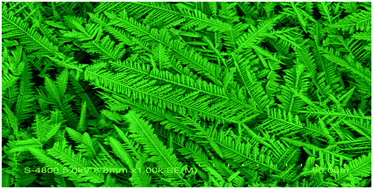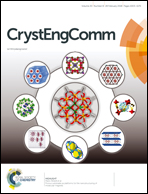The role of HNO3 in the electrochemical deposition of dendritic PbTe microstructures
Abstract
Dendritic PbTe microstructures were successfully obtained by a simple potentiostatic electrodeposition route from an electrolyte consisting of Pb(NO3)2, Na2TeO3 and HNO3 at room temperature. Different from Xiao's report (Electrochimica Acta, 2006, 52, 1101), in which the effects of the deposition potential and original concentrations of Pb and Te sources on the film composition and microstructure of PbTe obtained from an acidic nitrate bath were investigated, our research mainly focused on the discussion of the role of HNO3 in the formation of PbTe dendrites. Experiments uncovered that some experimental parameters, including the deposition potential, the time and the additive, only slightly affected the formation of PbTe dendrites in the presence of HNO3 at a certain concentration. Also, no PbTe dendrites were obtained under the same deposition conditions after HNO3 had been replaced by other strong acids such as HCl, H2SO4 and HClO4, implying that HNO3 played a crucial role in the formation of dendritic PbTe microstructures. Obviously, the present work is of great significance in directing the fast electrodeposition of dendritic PbTe microstructures in practical applications.



 Please wait while we load your content...
Please wait while we load your content...